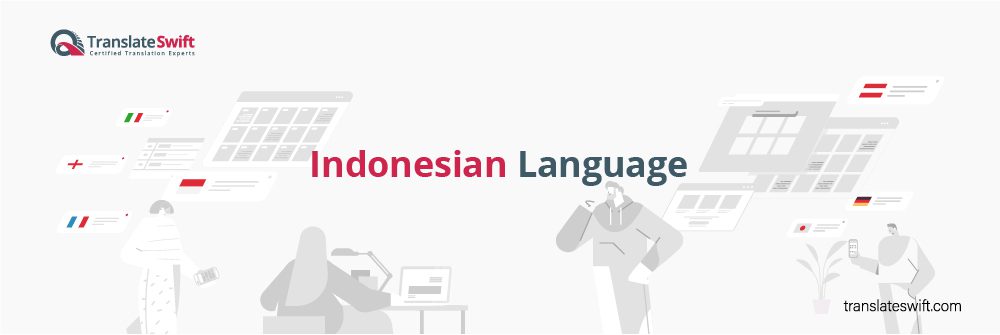
The story of the Indonesian language traces back to ancient times. It evolved from Proto-Austronesian, the common ancestor of Austronesian languages spoken across the Indonesian archipelago. As maritime trade flourished in the region, interactions between diverse communities led to linguistic exchanges. This also encouraged the development of distinct regional languages.
Over centuries, Malay emerged as a lingua franca among traders and seafarers. It still fosters cultural exchange and facilitating communication across the Malay Archipelago. This period also laid the foundation for modern Indonesian. It is further characterized by its rich blend of linguistic influences from Sanskrit, Arabic, Dutch, and Portuguese. This reflects Indonesia’s diverse cultural heritage.
Geographical Distribution
Today, Indonesian is spoken by over 270 million people, making it one of the most widely spoken languages globally. It serves as the official language of Indonesia, uniting the nation’s diverse ethnic groups and fostering national unity. Additionally, Indonesian is widely understood and spoken in neighboring countries such as Malaysia and Brunei. This is owing to historical ties and shared linguistic roots.
Sounds and Structure
The melody of Indonesian unfolds through its sounds and structure, characterized by its simplicity and elegance. Indonesian is largely phonetic, with a relatively straightforward pronunciation system compared to many other languages. While it has undergone some regional variations, particularly in vocabulary and accent, standard Indonesian remains mutually intelligible across different regions of the archipelago.
Writing System
The adoption of the Latin alphabet for the Indonesian language during the Dutch colonial period. In the 20th century, this marked a significant shift in the country’s linguistic landscape. Prior to this, various scripts were used across the Indonesian archipelago. These include the Javanese script, the Balinese script, and Arabic script for religious texts. However, the Dutch colonial administration saw the need for a standardized writing system. This was mainly to facilitate administration, education, and communication among diverse ethnic groups.
The Latin alphabet, consisting of 26 letters, was chosen for its simplicity and familiarity to Westerners. This decision aimed to streamline communication and promote literacy among the Indonesian population. The introduction of the Latin script represented a departure from traditional writing systems but offered several advantages, including ease of learning and compatibility with modern printing technology.
Indonesian orthography follows a phonetic principle, with each letter generally corresponding to a single sound. Unlike languages with complex writing systems, such as Chinese characters or Arabic script, Indonesian spelling is relatively straightforward, making it accessible to learners of all ages. Furthermore, the Latin alphabet allows for the representation of Indonesian phonology with a high degree of accuracy, facilitating clear and consistent pronunciation.
Cultural Significance
Indonesian is more than just a means of communication; it is a reflection of Indonesia’s rich cultural heritage and national identity. It serves as a vehicle for the expression of diverse traditions, beliefs, and customs, from traditional ceremonies and rituals to modern literature and media. Indonesian is also a symbol of unity and pride for the Indonesian people, fostering a sense of belonging and shared identity in a culturally diverse nation.
Our Translation Services
At TranslateSwift, we understand the importance of accurate and culturally sensitive translation services. Whether you require Indonesian to English translation or vice versa, our team of experts is dedicated to bridging communication gaps seamlessly. With our commitment to excellence, reliability, and cultural understanding, we can help you connect with the Indonesian-speaking world with confidence and ease.
Other Languages
- English
- Spanish
- German
- Dutch
- French
- Italian
- Afrikaans
- Albanian
- Amharic
- Arabic
- Armenian
- Azerbaijani
- Basque
- Belarusian
- Bengali
- Bosnian
- Bulgarian
- Cantonese
- Catalan
- Cebuano
- Chichewa
- Chinese - Simplified
- Chinese - Cantonese
- Chinese - Traditional
- Chinese - Mandarin
- Corsican
- Croatian
- Creole
- Czech
- Danish
- Dari
- Esperanto
- Estonian
- Farsi
- Filipino
- Finnish
- Frisian
- Galician
- Georgian
- Greek
- Gujarati
- Haitian Creole
- Hausa
- Hawaiian
- Hebrew
- Hindi
- Hmong
- Hungarian
- Icelandic
- Igbo
- Indonesian
- Irish
- Japanese
- Javanese
- Kannada
- Kazakh
- Khmer
- Korean
- Kurdish
- Kyrgyz
- Lao
- Latin
- Latvian
- Lithuanian
- Luxembourgish
- Macedonian
- Malagasy
- Malay
- Malayalam
- Maltese
- Maori
- Marathi
- Mongolian
- Montenegrin
- Myanmar
- Nepali
- Norwegian
- Odia
- Pashto
- Persian
- Polish
- Portuguese
- Punjabi
- Romanian
- Russian
- Samoan
- Scots Gaelic
- Serbian
- Sesotho
- Shona
- Sindhi
- Sinhala
- Slovak
- Slovenian
- Somali
- Sundanese
- Swahili
- Swedish
- Tajik
- Tagalog
- Tamil
- Telugu
- Thai
- Turkish
- Ukrainian
- Urdu
- Uyghur
- Uzbek
- Vietnamese
- Welsh
- Xhosa
- Yiddish
- Yoruba
- Zulu
